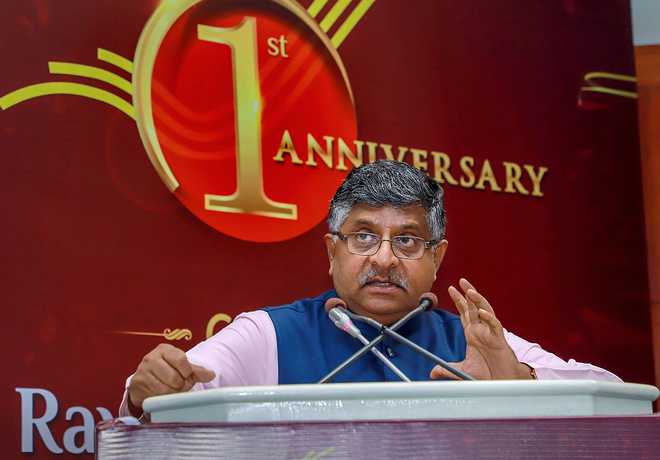Advertisement
Tribune News Service
New Delhi, October 11
Four years after the Supreme Court struck down the National Judicial Appointments Commission (NJAC) Act and restored the collegium system under which judges appoint judges, the National Democratic Alliance Government still appears uncomfortable with the verdict.
“I have very, very strong reservations at the flawed logic given in the judgment. The government has accepted and respects the judgment,” Law Minister Ravi Shankar Prasad on Friday during a book launch function here.
Criticising the Supreme Court’s 2015 judgment striking down the NJAC Act which gave some say to the executive in appointment of judges in the higher judiciary, Prasad termed the logic given in the verdict “patently flawed”.
The minister said even before the collegium system came into being in 1993 through a judicial verdict, good judges were appointed.
Unlike the Collegium—which has only judges on the selection panel—the NJAC Act was supposed to be a six-member body having Chief Justice of India as its chairperson, two other senior most judges of top court, two eminent persons and Union Law Minister.
But the Supreme Court had in October 2015 declared the NJAC Act unconstitutional, saying the presence of the Law Minister would compromise on the independence of judiciary.
He wondered if the prime minister can be trusted with nuclear arsenal and appointment of constitutional authorities such as the chief election commissioner and the chief vigilance commissioner, why his representative in the NJAC can’t be trusted with appointing good judges.
Referring to illustrations of Hindu gods Ram, Krishna, Hanuman in the original Constitution of India, he said these illustrations represented the cultural heritage of India. “Had the Constitution been framed today with these illustrations, what kind of storm it would have triggered,” he wondered.
Advertisement
×
Unlock Exclusive Insights with The Tribune Premium
Take your experience further with Premium access.
Thought-provoking Opinions, Expert Analysis, In-depth Insights and other Member Only Benefits
Combo
Yearly
Monthly
Already a Member? Sign In Now
Advertisement
Advertisement
Advertisement










